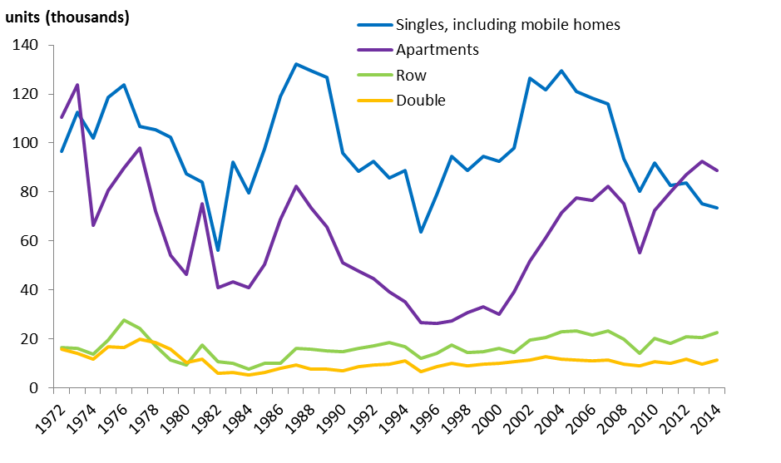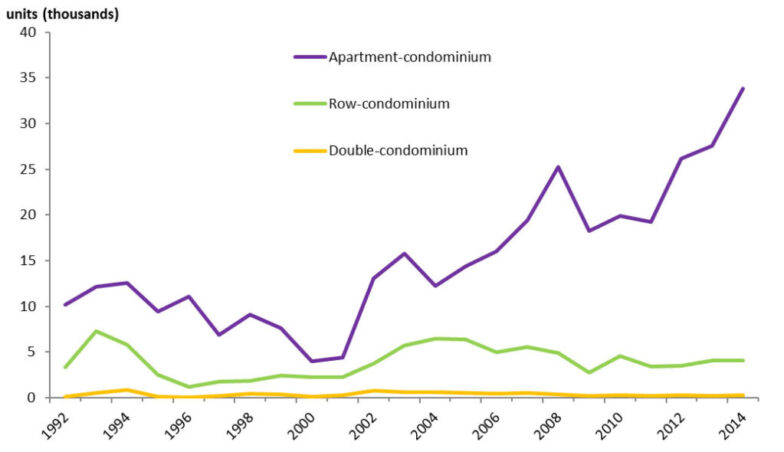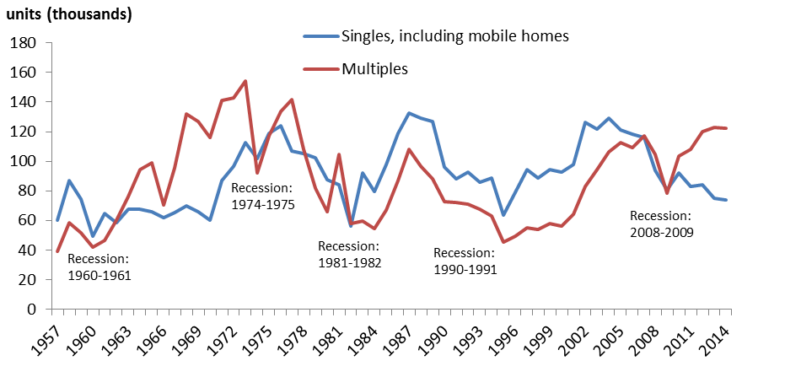The Toronto and Vancouver real estate markets have changed significantly in the past 50 years. These dynamic shifts have had a significant impact on house prices, from post-war booms to the current spike. Understanding these tendencies requires an understanding of data, which provides insights into the changing patterns of urban development, the effects of policy, and the economic forces affecting these two significant Canadian cities.
The Evolution of Housing in Toronto
1960s to 1980s: Post-War Boom and Suburban Expansion
After World War II, Toronto saw a significant housing boom in the decades that followed. Suburban development surged during this period, propelled by rising demand for reasonably priced family homes and bolstered by improvements in infrastructure and transportation. For many, the suburban dream—characterized by single-family houses and rapidly developing new communities—came true. Patterns of urban expansion and population increase that occurred throughout this time highlight the influence of shifting demographics and economic prosperity on the development of the city’s periphery.
1990s to 2000s: Urban Development and the Rise of Condominiums
Toronto’s housing market underwent a fundamental change in the late 20th century. The emphasis shifted to urban growth and high-density living as the city struggled with space limitations and an expanding population. A glance at the nationwide building permits reveals a significant increase in the building of apartment-style condominiums between the mid-1990s and 2000s, indicating a shift in consumer preferences toward smaller, easier-to-maintain living areas. Significant policy changes also took place during this time, such as zoning reforms and development incentives, which data has shown to be correlated with trends in home development and consumer reactions.
Chart 1: Building permits, type of dwelling, Canada, 1972 to 2014

2000s to Present: Upswing in Prices and Luxury Housing
As the twenty-first century wore on, Toronto’s real estate market transitioned into a new stage marked by an unheard-of price increase and a drive toward opulent dwelling constructions. The city has become denser during this age, and high-rise luxury residences are a regular sight on the skyline. The dynamics of the market have changed due to the increase in property costs and the entry of wealthy purchasers. The upward trend in the nationwide condominium build intentions starting in the 2000s shows how the housing market has been impacted by changes in domestic policy, international economic factors, and demography.
Chart 2: Building permits, condominium construction intentions, Canada, 1992 to 2014

The Transformation of Vancouver’s Housing Landscape
1960s to 1980s: Initial Growth Phases
The redevelopment of Vancouver started in the middle of the 20th century. The city, which is renowned for its picturesque surroundings and expanding economic prospects, has seen the growth of new neighbourhoods and the introduction of a variety of housing styles. This period was characterized by the growth of residential areas outside of the typical urban core, into what were formerly considered suburban or even rural areas. During the 1960s to 1980s, the city experienced the emergence of famous neighbourhoods and a wide range of housing options, which were a reflection of the changing demands of its citizens and the increasing multicultural influence of the area.
Chart 3: Building permits, single-family and multi-family dwelling units, Canada, 1957 to 2014

1990s to 2000s: Post-Expo 86 Boom and International Influence
The time after Expo 86 marked a turning point in Vancouver’s housing history. Vancouver gained international recognition and investment as a result of the World’s Fair. A major tendency toward high-rise apartment complexes emerged during this time, fueled by the city’s inherent topographical limitations as well as the inflow of foreign finance and investing. A new urban lifestyle that offered people easy access to the city’s center and its services was embodied by the growth in high-rise dwellings. By exposing trends in foreign investment and its relationship to the changing urban landscape, data aids in the understanding of the period’s exponential rise in property values.
2000s to Present: Affordability Crisis and Response
Vancouver’s housing market has been plagued by an affordability crisis in recent years. It is becoming more and more difficult for regular citizens to acquire homes in the city due to the skyrocketing cost of housing. This phenomenon is directly related to the city’s ongoing influx of foreign investment and its standing as a sought-after location worldwide. The city’s reaction has been the subject of intense scrutiny and research. It includes policy initiatives meant to calm the market and boost the availability of affordable homes.
Data Insights
Data Sources: Unearthing the Story Behind the Numbers
To deeply understand the transformative housing trends in Toronto and Vancouver, a variety of data sources can be employed. These include:
- Demographic Data: This offers insights into population growth, aging populations, migration patterns, and household compositions over the decades. Such data helps to understand who is moving into these cities, their family structures, and how these factors drive housing demand.
- Building Permits and Development Plans: These provide a forward-looking view of the housing market, indicating where development is concentrated, the pace of urban expansion, and what types of housing are being built such as single-family detached to apartment-condominiums.
- Economic Indicators: Employment rates, income levels, and broader economic conditions are crucial for understanding the purchasing power of residents and the overall demand for housing.
- Real Estate Transactions: Analyzing sales data, including prices, volumes, and time-on-market, reveals trends in housing affordability, buyer and seller behaviour, and overall market health.
- Policy Documents and Regulations: Changes in housing policy, zoning laws, and development incentives can significantly impact housing trends.
Comparison of Housing Development Trajectories
Toronto:
- Toronto’s growth has been characterized by a steady evolution from suburban expansion to urban densification.
- The city has seen a substantial rise in condominium development, especially in the downtown core, responding to the increasing demand for urban living.
- The housing market has been significantly influenced by both domestic migration and international immigration, contributing to its diversity and vibrancy.
Vancouver:
- Vancouver’s growth trajectory, while similar in urban densification, has been more heavily influenced by foreign investment, particularly from the Asia-Pacific region.
- The city has seen a rapid transformation post-Expo 86, with a significant shift towards luxury high-rise apartments.
- Vancouver’s housing market has been marked by a more pronounced affordability crisis, leading to more aggressive policy interventions compared to Toronto.
Similarities and Differences
Similarities:
- Urban Densification: Both cities have seen a shift from suburban-style living to more urban, high-density housing.
- Policy Responses: Each city has implemented policies aimed at cooling the housing market and increasing the supply of affordable housing, although the extent and nature of these policies differ.
- Demographic Changes: Toronto and Vancouver have both experienced demographic shifts that include aging populations and increased diversity due to immigration.
Differences:
- Market Drivers: While both markets have been driven by a combination of domestic and international factors, Vancouver’s housing market has been more significantly impacted by foreign investment, which has been a key driver of its high real estate prices.
- Policy Interventions: Vancouver has adopted more aggressive measures, such as the Foreign Buyers Tax and the Empty Homes Tax, in response to its unique market challenges.
- Affordability Crisis: Vancouver has faced a more severe affordability crisis than Toronto, leading to different societal and political pressures and responses.
The Future of Housing in Toronto and Vancouver
Data-driven forecasts are essential for speculating on future patterns in the Toronto and Vancouver real estate markets as we look to the future. These projections aid in not just predicting market trends but also in anticipating possible obstacles and grabbing new possibilities.
Future Trends in Toronto
- Continued Urban Densification: Toronto is likely to continue its trend towards urban densification. High-rise and mixed-use developments are expected to dominate, catering to a growing population seeking urban conveniences and lifestyles.
- Technological Advancements: The adoption of smart home technologies and green building practices is anticipated to rise, driven by a focus on sustainability and efficiency.
- Diverse Housing Needs: The evolving demographic landscape, including an aging population and smaller household sizes, may drive demand for varied housing types, from senior living facilities to micro-apartments.
Future Trends in Vancouver
- Influence of Foreign Investment: The extent and impact of foreign investment will continue to be a factor, potentially shaping policy decisions and market dynamics.
- Addressing the Affordability Crisis: Efforts to tackle the affordability crisis will likely remain a central theme. This could include a mix of policy interventions, innovative financing models, and an increase in affordable housing projects.
- Sustainable Urban Planning: With its commitment to environmental sustainability, Vancouver may see a surge in eco-friendly housing developments, utilizing renewable energy sources and sustainable materials.
Challenges and Opportunities
- Affordability: Ensuring housing affordability remains a significant challenge, especially for low and middle-income groups. Innovative solutions such as co-housing, rent-to-own schemes, and government incentives could be pivotal.
- Policy and Regulation: The future housing market will also be shaped by policy decisions and regulatory changes, which will need to adapt to emerging trends and challenges.
- Technological Advancements: The integration of technology in construction, such as the use of AI, LiDAR scanning, augmented reality, and modular building methods, presents an opportunity for more efficient, cost-effective, and environmentally friendly housing solutions.
- Sustainability: Both cities face the challenge of balancing urban development with sustainability. This includes managing carbon footprints, preserving green spaces, and implementing eco-friendly building practices.
In hindsight, the housing markets in Toronto and Vancouver have experienced incredible changes in the last fifty years, with each city exhibiting distinct patterns influenced by a variety of variables such as alterations in the economy, changes in the population, modifications to laws, and the impact of foreign investment. Urban housing markets are dynamic. Take Toronto, which steadily moved from suburban growth to high-rise urbanization, and Vancouver, which is acutely focused on luxury flats and facing an affordability issue.
Data is essential to comprehending these dynamic environments. We can generate informed forecasts about the future by analyzing patterns from a variety of data sources, such as real estate transactions and demographic data, which gives us vital insights into historical trends. This data not only illuminates the shifting demands and tastes of the urban populace but also shows how economic and policy decisions affect housing markets. Numerous data-driven insights that provide a distinct viewpoint on the factors influencing our cities are just waiting to be discovered. Digging further into these findings can offer priceless information for anybody interested in the future of our urban environments, be they policymakers, real estate investors, urban planners, or just general citizens.
Our team can give you the information you require if you’re searching for thorough data analysis services in the real estate industry. Our specialty is using data to provide in-depth studies and reports, customized to your individual needs, of market trends, demographic shifts, and future projections. Get in touch with us to find out how our knowledge can assist you in navigating the always-shifting real estate markets in places like Toronto and Vancouver.
